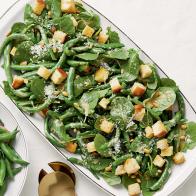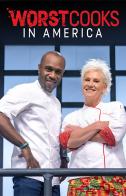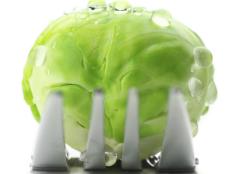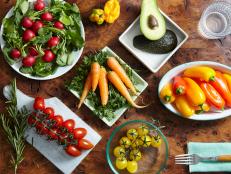10 Best Antioxidants and What Foods to Eat for Them
Antioxidants are crucial to your health. Here are 10 your body needs and how to find them in food.
Related To:
Photo By: Westend61/Getty
Photo By: Olena Rudo / 500px/Getty
Photo By: Westend61/Getty
Photo By: Tali Aiona / EyeEm/Getty
Photo By: Arx0nt/Getty
Photo By: Kevin Reid/Getty
Photo By: Westend61/Getty
Photo By: Carmen Troesser/Getty
Photo By: Aleksandr Zubkov/Getty
Photo By: Westend61/Getty
Photo By: Westend61/Getty
What Are Antioxidants?
Antioxidants are compounds naturally found in various foods that help protect cells against free radical damage. Free radicals can damage cells and may also play a role in cancer, heart disease, and other conditions. Scientists are still discovering the various forms of antioxidants as there are so many! For example, there are more than 4,000 known flavonoids which is only one class of antioxidant. Below are 10 well known antioxidants and where you can find them.
Vitamin C
This water soluble vitamin also goes by the name ascorbic acid. In addition to its potential immune-boosting properties, vitamin C helps form collagen, which is a fibrous material that makes the body’s connective tissue and helps keep hair, skin, and nails strong. Vitamin C is important to help absorb plant-based sources of iron (like spinach and kale). It also helps decrease inflammation and prevents damage to the body’s cells.
Top food sources: citrus fruit like oranges and grapefruit; broccoli; bell peppers
Vitamin E
This fat-soluble vitamin helps protect cells from free radical damage that may lead to heart disease and certain forms of cancer (like prostate and colorectal). This vitamin also helps boost immunity and keeps hair and skin healthy.
Top food sources: Spinach, peanut butter, canola oil, wheat germ, and sunflower seeds
Beta-Carotene
Beta-carotene is one of the main plant-based forms of vitamin A — the other is retinol. This antioxidant form of vitamin A works to protect your cells from free radical damage.
Top food sources: Sweet potatoes, carrots, mustard greens, kale, butternut squash, and cantaloupe
Selenium
This trace mineral helps to prevent damage to cell structures like your red blood cells. It also plays a role in immunity and may help protect the cells against certain forms of cancer.
Top food sources: Seafood, lean meats, whole grains, nuts and eggs
Lycopene
This antioxidant is what gives tomatoes, watermelon, and other red fruit their beautiful hue. It helps protect the cells from free radical damage and has been shown to help lower your risk of heart disease, certain forms of cancer (like prostate), and macular degeneration (an age-related eye disease). Much of the research that shows these benefits were done with folks eating foods high in lycopene — and not taking the supplements.
Top food sources: Watermelon, processed tomato products (like catsup and canned tomatoes products), and pink and red grapefruit
Lutein
There are numerous classes of antioxidants, one which is called carotenoids. Lutein is a type of carotenoid that helps with eye, skin, and heart health. Antioxidants in the carotenoid family, including lutein, have also been shown to help protect against breast cancer.
Top food sources: kale, spinach, green peas, corn, carrots, egg yolks and squash
Anthocyanins
This powerful antioxidant gives fruits and veggies their beautiful red, purple, and blue shade. They specifically help protect the cells of the blood vessels and nervous system which is good for heart and brain health. This anti-inflammatory may also help prevent diabetes, keep your eyes healthy, and lower the risk of certain forms of cancer.
Top food sources: Berries, grapes, red cabbage, sweet potatoes, red onions, and eggplant
Zeaxanthin
This antioxidant is also part of the carotenoid family and gives fruits and veggies their bright yellow, orange, and red color. Zeaxanthin has been shown to help reduce the risk of macular degeneration, an age-related eye condition that leads to vision loss. It has also been shown to help protect the body against certain forms of cancer.
Top food sources: Orange peppers, persimmons, corn, spinach and kale, and tangerines
Catechins
This natural compound is part of the group of antioxidants called flavonoids. It has been shown to help fight inflammation. It also has been linked to lower the risk of heart disease and stroke and help recover from heart attacks faster. There is also research that suggests that catechins may help fight breast and ovarian cancers.
Top food sources: green tea, chocolate, and red wine
Zinc
Zinc has antioxidant properties as it protects cells again the damage of antioxidants. It also plays a role in immunity and has anti-inflammatory properties.
Top food sources: Meat, shellfish, lentils, chickpeas, seeds, and nuts





































